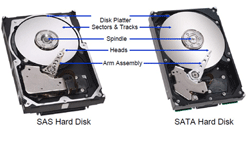EBU helps broadcasters choose best storage network
The European Broadcasting Union (EBU) has published a document to help its member broadcasters with the complex process of selecting and configuring the best storage system for their production networks. The document, called Tech 3362 Media Storage Performance — Design Considerations and Benchmarking, is based on work done by the BBC in evaluating how performance, capacity and cost vary with different storage configurations and technologies. The BBC developed testing software called Media Storage Meter to conduct benchmarks and assess the merits of different systems and arrangements. The EBU document was motivated by the rapid growth in media storage driven by proliferation in content and increase in resolutions, along with rising dependence on IT systems and IP networks in production. The importance of making the right storage choices to reduce costs and ensure the highest quality of experience is increasing, as is the range of options, at a time when storage vendors have yet to design products properly optimized for video.

The EBU document does not give advice but does examine three storage scenarios, which provides a foundation for broadcasters to conduct their own benchmarks, while providing some useful general advice along the way. According to the UK-based TV consultancy and analyst group Rethink Technology Research, the most important recommendation in the EBU document was for broadcasters to avoid having a separate dedicated Storage Area Network (SAN). It was much better for broadcasters to converge on a common IT network using Ethernet technology, connecting specialized storage systems to it as required, to avoid the costs of running a separate network based on another protocol, Fibre Channel, which would require additional interfaces in workstations.
The EBU evaluated a network using off-the-shelf storage systems, along with two others using specialized systems, but with different approaches to file management. One used a virtual file system implemented in software, while the other relied on hardware for file management. The tests showed that the specialized systems performed better, although they had more disks and more powerful storage controllers, so further research is needed to confirm that they really are superior to generic storage, especially when cost is taken into account. There were not great differences between the two specialized arrangements, with the EBU concluding that the best choice would vary between broadcasters depending on factors such as the balance between the amount of disk reading and writing.
The other key point was that disk storage is here to stay because of its inherent cost and capacity advantages. But there is a choice between two main disk technologies, SAS and SATA. The latter offers more storage per buck, while SAS is faster and also more reliable, with lower error rates and greater Mean Time Between Failure (MTBF). However, use of solid-state flash in front of the drive can mitigate the performance handicap of SATA, but itself costs a lot more per unit storage. At the same time SAS and SATA can be used in combination, so there are plenty of tradeoffs here that the BBC’s tool can help evaluate.
The professional video industry's #1 source for news, trends and product and tech information. Sign up below.
